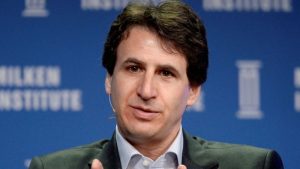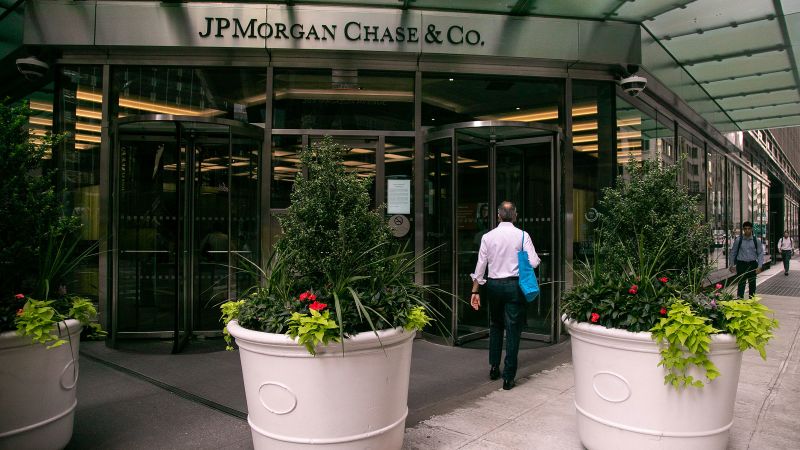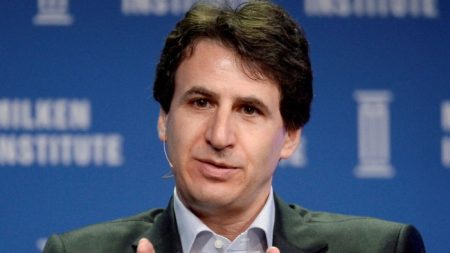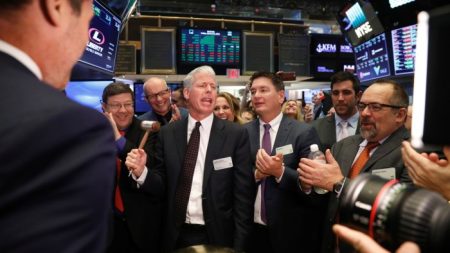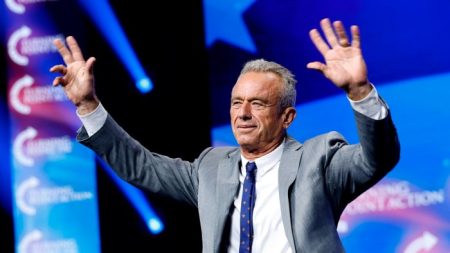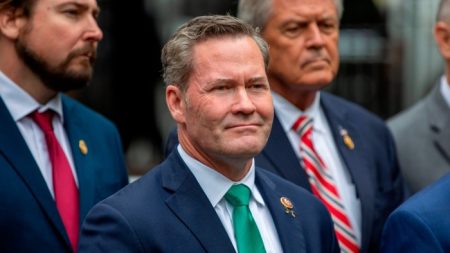A version of this story first appeared in CNN Business’ Before the Bell newsletter. Not a subscriber? You can sign up right here. You can listen to an audio version of the newsletter by clicking the same link.
America’s businesses are beginning the year with some cautious optimism.
In 2023, the US economy avoided a recession and the job market remained robust as inflation cooled steadily throughout the year. Americans continued to spend, keeping service providers, retailers and manufacturers afloat.
The economy’s remarkable resilience last year, which baffled economists and investors, could persist. There’s now a decent chance that inflation could continue to drift toward the Federal Reserve’s 2% target without a sharp rise in unemployment — a rare feat known as a “soft landing.” The Fed will also begin to cut interest rates this year.
But, while businesses have plenty to be grateful for and much to be optimistic about, the coast isn’t clear.
Last week, surveys from the National Federation of Independent Business (NFIB) and The Conference Board detailed the biggest risks that businesses are currently worried about. The US Chamber of Commerce also hosted its annual State of American Business event on Thursday.
Here are some of the biggest risks for American businesses in 2024.
For starters, since there’s always a chance of a downturn on any given year, the threat of a recession still lurks.
The Conference Board released a survey of more than 1,200 executives on Wednesday and it listed a recession as their top concern. It showed that 37% of US chief executives are prepared for a recession in the year ahead.
The economy is certainly contending with some headwinds: Americans are racking up debt as they continue to draw down their pandemic savings while banks are toughening their lending standards.
Some economists and investors still think a recession is in the cards for this year, while others don’t. Wells Fargo economists recently said in their latest economic forecast that they no longer see a recession on the horizon anytime soon.
“In the spirit of John Maynard Keynes, the facts have compelled us to change our minds,” they wrote in a note Friday. “In short, we now look for the US economy to continue expanding over our entire forecast period, which runs through the end of 2025.”
The second biggest concern among business executives, according to The Conference Board’s survey, was inflation.
Since exploding nearly three years ago, inflation has retreated substantially, but it remains above the Fed’s official 2% target — and above anything Americans were used to before the pandemic.
“Even though inflation gauges have shown some slowing, the level of prices is still much higher than what many companies are used to, and many are still experiencing upward wage pressures because of labor shortages in a number of industries,” Dana Peterson, chief economist at The Conference Board, told CNN in an interview.
The NFIB’s December survey of small businesses, released Tuesday, said that inflation returned as the “top business problem on Main Street.” The survey also showed that firms continued to struggle with higher labor costs and issues with finding qualified candidates for their openings.
“Inflation and labor quality have consistently been a tough complication for small business owners, and they are not convinced that it will get better in 2024,” NFIB chief economist Bill Dunkelberg said in a release.
Sentiment among America’s small businesses remains in the doldrums, according to the NFIB’s monthly surveys, despite inflation slowing considerably over the past year. The survey’s optimism index stood at a reading of 91.9 in December, “marking the 24th consecutive month below the 50-year average of 98.”
Another business risk in 2024 is interest rates. Even though the Fed is expected to begin cutting rates sometime this year, rates will not go back to near-zero.
Fed officials’ latest economic projections released last month show that they expect rates in the long run to settle slightly below 3%. While that’s down from the current range of 5.25-5.5%, the highest level in 23 years, it’s well above the near-zero rates in the early days of the pandemic, which the Fed had reduced to keep the economy’s head above water.
That could become a problem once companies who took out a business loan in 2020 need to refinance, which could be as soon as this year for many.
“If you have a bunch of companies that had tremendous amounts of debt coming due and they have to refinance at significantly higher rates, that raises the risk of default,” Peterson said.
“That will certainly feed back through financial markets, through the entities that lent them the money, and also through investors who also own those securities. Those financial stresses can reduce the willingness of banks to lend to others businesses and also to consumers,” she said.
Corporate America also seems to be wary of the risks posed by ongoing gridlock and polarization in Congress.
“The only risk that businesses say is getting worse is the risk that comes from our own government,” Suzanne Clark, president and CEO of the US Chamber of Commerce, said Thursday during the chamber’s State of American Business event.
“We’re locked in this cycle of hyperpartisanship and political power swings,” she said.
Last year, a political stalemate in Congress almost resulted in the US defaulting on its debt for the first time in history, which would have ignited an economic firestorm of massive proportions. Hardline conservatives are currently trying to undermine a recent bipartisan deal struck between House Speaker Mike Johnson and Senate Majority Leader Chuck Schumer on a spending package, with a government-shutdown deadline only a few days away.
The quarrelsome nature among Congressional lawmakers was a big reason why Fitch Ratings, a risk assessment firm, downgraded its US debt rating from the highest AAA rating to AA+, citing “a steady deterioration in standards of governance.” Moody’s Investors Service, another ratings agency, changed the outlook of the nation’s debt to negative in November.
Political polarization has also made it extremely difficult to pass major reforms on immigration and healthcare. Clark, the US Chamber of Commerce’s CEO, pointed to the government’s slow approval of building permits, a backlog of worker-visa applications, and the high cost of childcare as examples of the government failing to meet the moment.
“There are big challenges and big opportunities that demand leadership on the part of our policymakers and partnership between government and business,” she said.
Some businesses rang in the new year with some cost cutting.
Only a few weeks into 2024, some major companies have already announced layoffs, including Google parent Alphabet, BlackRock, Amazon, Duolingo, and Citigroup.
JPMorgan Chase kicked off earnings season Friday with a big miss. But that’s because of some strange accounting, my colleagues Nicole Goodkind and Krystal Hur report.
The bank’s fourth-quarter profit fell by 15% from the year before, to $9.3 billion, way less than analysts surveyed by FactSet had expected.
Earnings per share came in at $3.04, also well under the $3.35 estimated by FactSet.
Those numbers might imply the bank is struggling. But that’s far from true: JPMorgan just notched its most profitable year on record. Revenue grew by 23% to $158 billion in 2023. Profit also grew by 32% for the year to $49.6 billion.
So what explains the discrepancy?
Blame the regional banking crisis.
It cost the Federal Deposit Insurance Corporation about $23 billion to clean up the mess that Silicon Valley Bank and Signature Bank left in the wake of their collapses last spring. It was large banks that mostly footed that bill.
JPMorgan’s profit was dragged lower by a one-time $2.9 billion charge the bank had to pay related to the crisis.
Without that one-time payment, JPMorgan said its earnings would have come in closer to $3.97 per share, blowing estimates away.
JPMorgan, the largest US bank by assets, is often viewed as a bellwether for the rest of Wall Street. And other banks certainly experienced similar problems.
Bank of America paid a $2.1 billion FDIC fee for the crisis. The bank reported fourth-quarter earnings of 35 cents per share, missing FactSet estimates of 53 cents per share. The bank said that without one-time fees, earnings for the quarter would have been about 70 cents per share.
Citigroup paid a $1.7 billion fee to the FDIC. The bank reported an earnings loss of $1.16 per share for the fourth quarter, falling below earnings estimates of 11 cents per share, according to FactSet. Fourth-quarter earnings would have been 84 cents per share without one-time costs, Citi said.
Citi saw several additional costs that impacted its results, including an $880 million loss in Argentina and $780 million in restructuring costs.
A JPMorgan spokesperson told CNN that FactSet and other analyst estimates did not include that special fee in their forecasts.
Monday: Markets closed in observance of Martin Luther King Jr. Day.
Tuesday: Earnings from Morgan Stanley and Goldman Sachs. China’s National Bureau of Statistics releases December figures on industrial production, retail sales, fixed-asset investment, its unemployment rate and fourth-quarter gross domestic product.
Wednesday: Earnings from Alcoa. The UK’s Office for National Statistics releases December inflation data. The US Commerce Department releases December figures on retail sales and November data on business inventories. The US Labor Department reports export and import prices in December. The Federal Reserve releases December figures on industrial production.
Thursday: The US Commerce Department reports housing starts and building permits in December. The US Labor Department reports the number of new applications for unemployment assistance in the week ended January 13. Japan releases December inflation data.
Friday: Earnings from PPG. The University of Michigan releases its preliminary consumer survey for January. The National Association of Realtors reports existing-home sales in December.
Read the full article here
